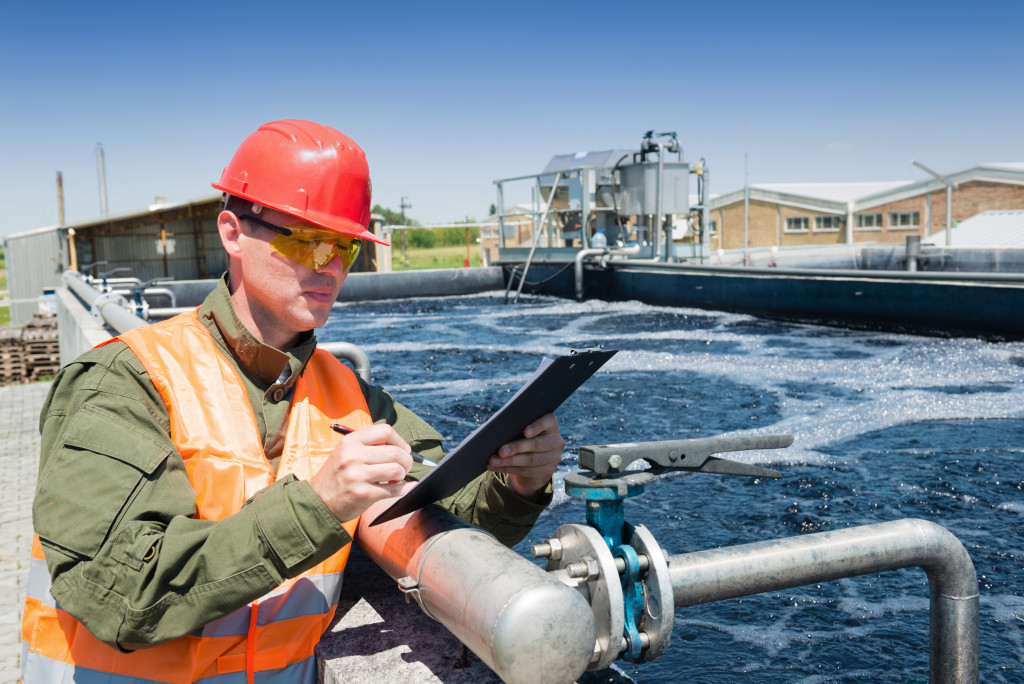Water treatment plants provide hundreds of thousands of people with clean water each day. However, the only way to ensure that the entire system keeps working properly is through proper maintenance. By routinely inspecting and cleaning equipment and making necessary repairs, treatment plants can operate at peak efficiency and provide clean water for years to come.
Here are some tips on how you can keep your local plant in great condition:
1. Clean Equipment Regularly

The only way to ensure that your plant’s water is clean and safe is by ensuring that the facility’s equipment is also clean. Inspectors should get into the habit of checking for any buildup or corrosion in tanks, filters, pumps, and other pieces of equipment. Cleaning dirty equipment prevents blockages and the spread of contaminants throughout the system.
2. Replace Broken Parts Immediately
Any time a pump fails in a treatment plant, it can cause widespread problems in an entire area. The news usually reports when multiple people contract waterborne illnesses from one outbreak at a local facility. One reason so many outbreaks occur is because no one notices when part of a facility malfunction—which means there isn’t any routine maintenance happening at all. If an inspector notices that a pump has failed, they should report it and then write up a request to replace the part as soon as possible.
3. Conduct Periodic Inspections
Inspectors should conduct quarterly inspections of all major pieces of equipment at their treatment plant. During these inspections, they should check for leaks, loose bolts, water pressure problems, and any general signs of wear. If they discover worn parts, inspectors should report them immediately so that the facility stays in great condition.
Over time, some equipment will just wear out or break down beyond repair. In this case, it’s important to be proactive and replace broken pieces before they cause a serious problem. This will ensure that your facility continues to provide clean water for years to come.
4. Monitor Conditions
Inspectors should monitor the conditions of their treatment plant to ensure that everything is working properly. They should check for any puddles in the facility’s yard, make sure all doors are closing fully, inspect pumps to make sure they’re running correctly, and test chemical levels in tanks. Regular monitoring will prevent problems like line corrosion, which can cause major issues in your facility (like pneumatic actuated valves not actuating or needing to replace pneumatic linear actuator).
5. Maintain Records
Proper record-keeping is essential to maintaining any facility—and this also applies to water treatment plants. Inspectors should keep records of who repairs what equipment when over time, so they can be proactive about making necessary repairs (and know when something really does need to be replaced versus when a quick fix is all they need). This information will also help the facility’s management pinpoint which equipment is in the most need of repair and replacement.
6. Contact Management When There Are Problems
Inspectors should always contact their water treatment plant managers as soon as they notice any problems so that these issues can be addressed promptly. If necessary, inspectors should call local authorities or state regulators to inform them of any problems at the plant—there are serious legal ramifications if no one reports an outbreak to officials right away.
7. Maintain Proper Water Storage
Storage tanks are an essential part of any water treatment facility. Inspectors should regularly check the levels of these tanks to ensure that they have enough clean water for their community members and determine whether it might be necessary to expand storage capacity in order to accommodate growing demand.
8. Check Water Pressure
When water leaves a treatment plant, it needs to be pushed through miles of mains all the way to its destination. If water pressure drops too low over time, it can mean that the system is losing large amounts of water (which could lead to major revenue losses). Inspectors should regularly check for any signs of reduced pressure in their facilities and make sure the mains are working properly.
9. Check Chemical Levels on a Regular Basis
Chemicals like chlorine are an important part of maintaining clean drinking water—but they also pose risks if they aren’t carefully monitored throughout the facility. Inspectors should test chemical levels at least once per shift (and on some occasions more frequently than this), so they can detect problems early on.
Maintaining a water treatment plant is no small task. It requires regular inspections of all major equipment, as well as routine monitoring of conditions and keeping records of repairs. Most importantly, it necessitates communication between inspectors and management so that any problems can be addressed immediately. By following these tips, your facility can run smoothly and provide clean drinking water for years to come.
